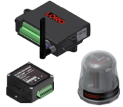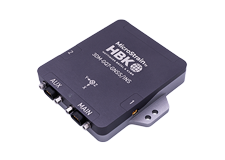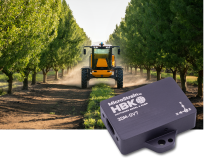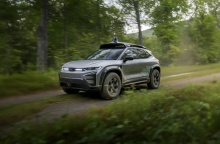Microstrain's groundbreaking micro-sensor solutions offer an unmatched combination of lightweight, low-profile performance ideal in robotics and automation, where weight and space constraints are critical to achieve optimal performance. As robotics and automatic processes become increasingly critical in our everyday lives - whether on the manufacturing floor, in our homes, or in robotic delivery platforms - the need for cost effective, highly accurate, and highly reliable performance becomes paramount.
MicroStrain's feature-rich sensor designs deliver the reliability and accuracy needed to incorporate sophisticated capabilities into autonomous devices and robotic instruments, and offer easy integration with ROS (robot operating system support).


Ian Moore, Field Application Engineer
The new 3DM-GQ7-GNSS/INS builds on the success of the 3DMGX5-GNSS/INS and adds many features desired by customers which resolve common challenges in specific use cases. This test report highlights four evolutionary improvements.
Asa Davis, Zach Fuchs, Erin Gunn, Rachel Masters, Christopher Robertson, Benjamin Say, David Schenkenberger
Drones already have their own internal IMU's, but those IMU's lack the accuracy needed for larger flight tasks. For shorter flights and recreational flying, the internal IMU is precise enough to keep the drone running as expected. A
The GV7 series of inertial sensors offers improved performance and functionality over the GX5 series while maintaining the same compact size and easy-to-replace design. This upgrade is ideal for those seeking higher accuracy and additional features.
Joel John, Software Engineer
By leveraging the strengths of both radar and INS, engineers and researchers can develop more capable and adaptable autonomous robots for a variety of applications, from industrial automation to autonomous vehicles.
Aidan Laracy, Field Applications Engineer
Our Field Applications Engineer, Aidan Laracy, did a deep dive to compare the performance of NMEA and MIP GNSS data input methods for the 3DM-CV7-INS. Learn as he explores the trade-offs between ease of integration and precision.
Developing humanoid robots involves an intricate blend of disciplines, including mechanical engineering, electronics, computer science, and artificial intelligence. THEMIS stands as a testament to these complex challenges.
Thiago A. Rodrigues, Jay Patrikar, Bastian Wagner, Sebastian Scherer, Constantine Samaras
Parker LORD sponsors research to model energy consumption for quadcopter package delivery drones
Ian Moore, Field Application Engineer
This report compares the steps necessary to use magnetometer vs dual-antenna as a heading source for a Cessna 150M flown in a repeated flight profile.
John Bergstrom
A case study of the GQ7 with dual antenna and RTK modem to collect navigation and position data using SensorConnect Software
ParkerHannifin MicroStrain
MicroStrain inertial sensors help Team Explorer, from Carnegie Mellon and Oregon State University win the first 2019 DARPA challenge event. with both aerial and ground robots.
MicroStrain
Sensors for Displacement Measuring





















